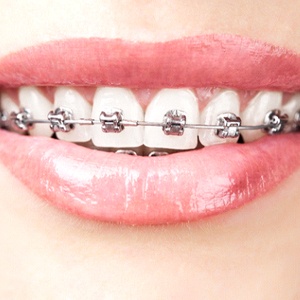Top Tips for Picking the most effective Cumming Orthodontist for Braces and Aligners
Top Tips for Picking the most effective Cumming Orthodontist for Braces and Aligners
Blog Article
Comprehensive Overview to Orthodontics Treatments for Fixing Oral Misalignments
Recognizing the intricacies of each procedure, including their systems, advantages, and potential disadvantages, is essential in making notified choices regarding one's orthodontic treatment. As we navigate with the thorough guide to orthodontic procedures for fixing dental imbalances, the intricate information of each method will certainly unfold, dropping light on the course towards a functional and harmonious oral placement.
Orthodontic Procedures Review

Normal changes and surveillance are essential parts of orthodontic treatment to guarantee development is on track and to make any type of needed modifications along the means. By undergoing orthodontic procedures, patients can not only attain a straighter smile yet additionally enhance their total oral wellness and feature.
Conventional Dental Braces: How They Function
When thinking about orthodontic therapies for dental imbalances, conventional braces stand out as a reliable technique for correcting teeth placing. Typical dental braces are composed of braces, cables, and bands that function with each other to use continuous stress on the teeth, slowly relocating them right into the desired positioning.
One secret aspect of exactly how typical dental braces job is the process of bone improvement. As pressure is related to the teeth with the dental braces, the bone surrounding the teeth is reshaped to sustain the new tooth positions. This renovation is necessary for the long-lasting security of the fixed positioning. Patients will certainly need regular changes at the orthodontist's office to make sure the braces remain to apply the appropriate pressure for efficient teeth movement.
Unseen Aligners: Disadvantages and pros
Unnoticeable aligners use a hassle-free and discreet option to typical braces for fixing dental imbalances. These clear, tailor-made trays are basically unseen when put on, making them an attractive choice for individuals seeking a more aesthetically pleasing orthodontic therapy. Among the key advantages of unseen aligners is their removability, enabling less complicated maintenance of dental health contrasted to traditional braces. Individuals can remove the aligners prior to consuming or cleaning their teeth, decreasing the danger of food obtaining embeded the appliance and streamlining the cleansing procedure.

Surgical Orthodontic Options
Surgical treatments in orthodontics existing viable options for addressing complex dental imbalances that may not be properly dealt with with standard orthodontic therapies. While invisible aligners and conventional braces can remedy numerous orthodontic issues, certain instances need medical intervention to achieve ideal outcomes. Surgical orthodontic choices are normally recommended for extreme malocclusions, significant jaw disparities, and situations where the underlying bone structure requires adjustment to accomplish correct positioning.
One typical surgical orthodontic procedure is orthognathic surgery, which involves rearranging the jaws to deal with practical concerns such as problem eating or speaking. This surgical treatment is frequently executed in collaboration with an orthodontist that assists straighten the teeth before and after the procedure. Surgical orthodontics might Our site also include procedures to reveal influenced teeth, remove excess gum cells, or reshape the jawbone to create an extra harmonious face profile.
Prior to considering surgical orthodontic alternatives, individuals go through an extensive assessment to figure out the requirement and possible benefits of such treatments. orthodontics. While surgery may appear challenging, it can dramatically enhance both the feature and appearances of the smile in situations where traditional orthodontic treatments fail
Retainers and Post-Treatment Treatment

Post-treatment care involves adhering to the orthodontist's directions vigilantly. This may include appropriate dental health methods, attending follow-up consultations, and putting on the retainers as recommended. Failure to abide by post-treatment treatment instructions can cause relapse, where the teeth progressively move back in the direction of their original placements. Consistent retainer wear, great oral hygiene, and regular dental exams are important for preserving the outcomes attained through orthodontic surgical procedure and making sure the long-lasting security of the fixed oral positioning.
Conclusion
Finally, orthodontic procedures use numerous alternatives for correcting oral imbalances. Conventional braces use steel brackets and cables to shift teeth right into proper alignment. Invisible aligners offer a more discreet option yet might not appropriate for all cases. Surgical orthodontic alternatives are offered for a lot more serious misalignments. Retainers are commonly used post-treatment to keep the brand-new alignment. On the whole, orthodontic treatments can properly boost oral health and wellness and visual look.
As we browse through the detailed guide to orthodontic treatments for fixing dental misalignments, the detailed details of Visit This Link each method will unfold, dropping light on the path towards a harmonious and useful dental placement. - cumming aligners
One of the most typical orthodontic treatments is the usage of braces, which are composed of metal brackets and cables that apply gentle pressure to progressively shift teeth into the desired placement.When thinking about orthodontic therapies for dental imbalances, conventional dental braces stand out as a reliable technique for remedying teeth positioning. Furthermore, unnoticeable aligners may not be ideal for complex orthodontic issues that need more substantial teeth activity, as they are usually recommended for mild to moderate cases. Retainers are custom-made orthodontic devices made to hold teeth in their corrected placements after the completion of orthodontic therapy.
Report this page